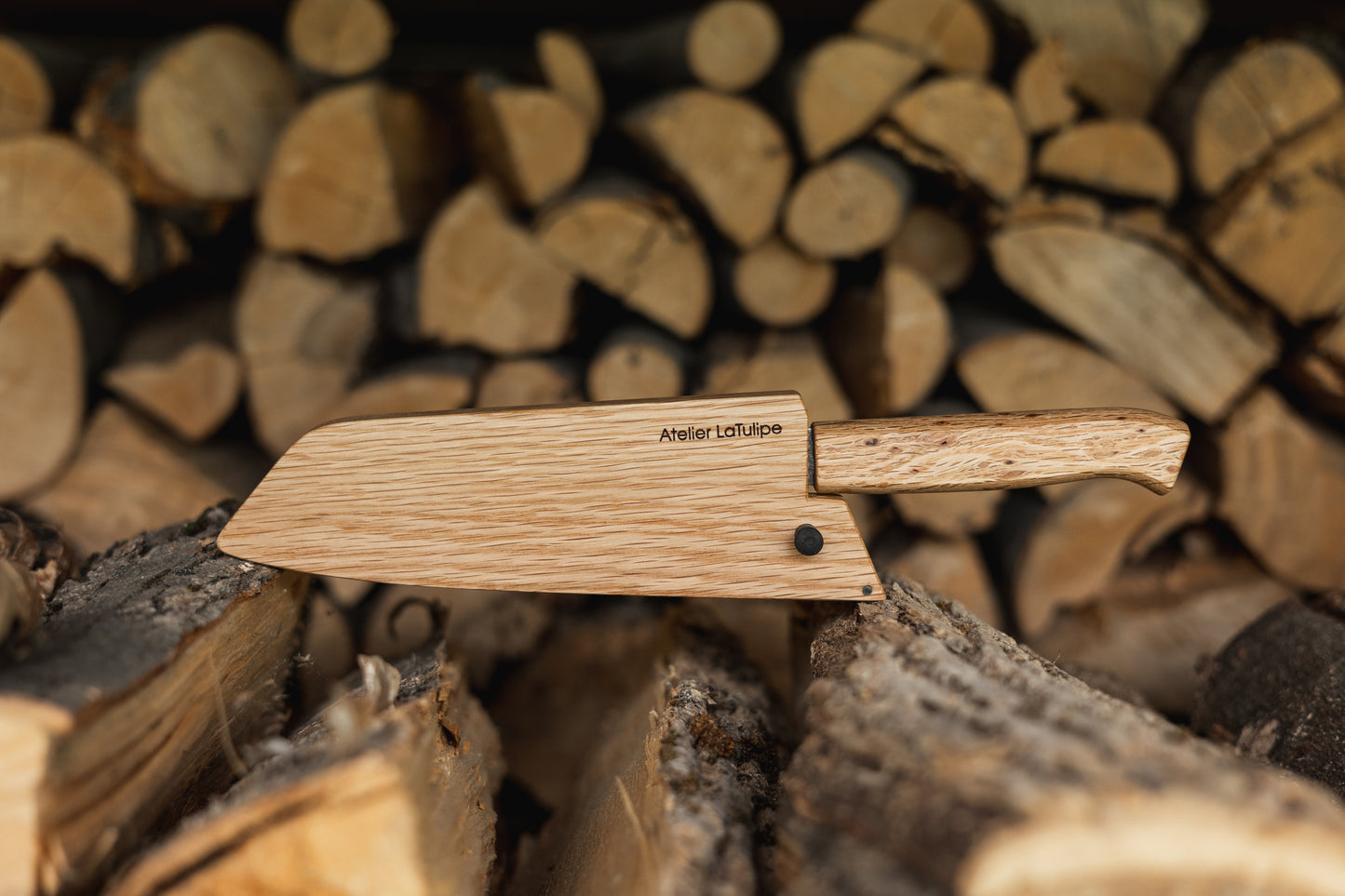Santoku
Santoku
Couldn't load pickup availability
The SANTOKU Knife
The name "Santoku" in Japanese means "three virtues," representing its three main functions : slicing, mincing and chiseling. Unlike the chef's knife (Gyuto), the Santoku is distinguished by its shape and shorter blade. Ideal for fruits, vegetables, meat (without bones), fish (without fish bones), and herbs. It is highly valued for its maneuverability, both in Japan and internationally.
HAZAKI Blade
Forged in Seki, Japan
Length : 180mm
Material : VG10 Damascus
Rockwell : 61
KONKETSU Handle
Handcrafted in Quebec
Material : Pippy oak or black stained white oak*
*White oak is characterized by its distinctive grain, water resistance as well as his density and exceptional durability.
Pippy oak is characterized by dormant buds beneath the bark. In case of damage, these buds help the tree regenerate; otherwise, they become part of the wood, giving that peppered grain and contributing to its rarity.
Comes with the Saya
MAINTENANCE
- Clean with mild dish soap and hot water after each use. Do not use abrasive sponges or abrasive cloths. Dry immediately after cleaning. NEVER PUT IN THE DISHWASHER.
- Always cut on a wooden cutting board. NEVER SCRAPE the board with the blade.
- The blade should never be twisted or subjected to lateral movements.
- Sharpen the knife on water stones at least once a year by a professional or depending on usage.
- Do not use for cutting bones, cartilages, shells, or frozen foods.
- Occasionally apply food-grade oil or food-grade wax to the handle, depending on usage.
Share












